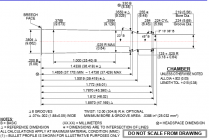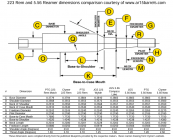kyotekiller25
Silver $$ Contributor
I'm about to start loading for an AR15 223 Wylde with a 20" krieger 7.7 twist. Taking some case measurements on fired brass and coming up with 1.457" on the Hornady comp gauge. Reason I believe it's on the tight side because my LR bolt R700 223 wylde has a tight chamber and the brass from that rifle comes out at 1.457"
Is this normal for an AR? Not super familiar with them. Also read where ARs need about 3-4 thou bump and 3-4 neck tension, which hopefully won't be an issue with my current die set up which is just an RCBS FL sizer. I also have a Redding FL bushing sizer with a .248" bushing for my bolt rifle with lapua brass at a .250" OD loaded neck. It won't work for the AR/federal brass which is like .247" Loaded neck. So I'd need like a 243"-.244" bushing for it. Seating is done with a Forster ultra micrometer for both rifles.
Is this normal for an AR? Not super familiar with them. Also read where ARs need about 3-4 thou bump and 3-4 neck tension, which hopefully won't be an issue with my current die set up which is just an RCBS FL sizer. I also have a Redding FL bushing sizer with a .248" bushing for my bolt rifle with lapua brass at a .250" OD loaded neck. It won't work for the AR/federal brass which is like .247" Loaded neck. So I'd need like a 243"-.244" bushing for it. Seating is done with a Forster ultra micrometer for both rifles.












